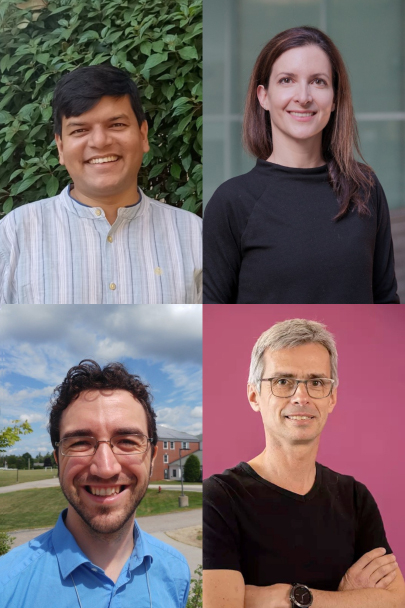Breakdance
- Pierre-François Lenne, Institut de biologie du développement de Marseille (IBDM)1
- Matthias Merkel, Centre de physique théorique (CPT)2
- Verena Ruprecht, Center for Genomic Regulation (CRG)
- Vikas Trivedi, European Molecular Biology Laboratory (EMBL)
BREAKDANCE (Horizon Europe - ERC SyG 101072123)
Control mechanisms and robustness of multicellular symmetry breaking
Understanding the establishment of an animal body plan is an important challenge of modern biology. Progress has been mainly limited by (1) a separation of research fields studying genetic and biophysical mechanisms, and (2) a lack of approaches to mimic multicellular tissue organization from first principles. In a cross- disciplinary effort, we will focus on the earliest stages of animal development, when first steps of cell differentiation define the primary body axis through spatial symmetry breaking, laying the foundation for the future body plan. Our goal is to identify the fundamental mechanisms controlling this symmetry breaking process. To this end, we will study in detail the interplay between global tissue geometry (shape, size, and dimension), physical boundary conditions, and mechano-chemical cell interactions. Therefore, we address the following questions: (i) How do global shape and size control local cellular states and interactions? (ii) How do local cellular states and interactions induce robust symmetry breaking at the tissue level? (iii) To which extent can geometry control cell fate specification in a species-independent manner? To overcome previous limitations, we will establish a comprehensive methodological toolbox of synthetic bottom-up approaches and functional ex-vivo assays. We use as model systems mouse, zebrafish, and later also human embryonic stem cells. This will be combined with advanced biophysical techniques and theoretical modeling in order to systematically dissect the mutual couplings between genetic patterning mechanisms and morphogenetic processes, thereby revealing the multicellular dance underlying tissue symmetry breaking. Our results will shed new light on the long-standing question of how complex biological forms are robustly built from a single fertilized egg, impacting on our understanding of organism development and maintenance, and opening new directions for the controlled design of artificial tissues and organs.
